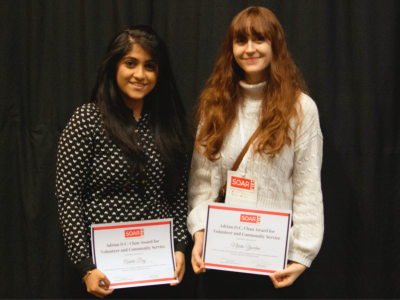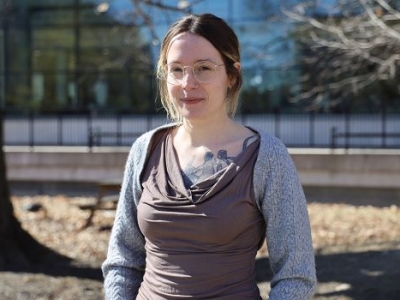PhD candidate Jeff Gilchrist made international news when he was part of a team that discovered the world’s largest known prime number with more than 10 million digits. If you printed all of the digits in a book, it would be over 3,200 pages long.
That discovery was named as one of the top 50 inventions of the year by Time Magazine and copped a prize worth $100,000 U.S.
“It has been almost four years since that discovery, so this shows prime numbers of this size are very rare and requires a lot of computation power to find,” says Gilchrist.
But fame is fleeting and Gilchrist quickly got back to his real work. As a doctoral student in the Department of Systems and Computer Engineering, he spent the last several years completing his dissertation and will be graduating on June 7.
Under the supervison of Dr. Monique Frize, distinguished professor of engineering at Carleton, and their physician partner Dr. Erika Bariciak, a neonatologist at the Children’s Hospital of Eastern Ontario (CHEO), he helped to develop models that could accurately estimate the risk of mortality in babies in the Neonatal Intensive Care Unit (NICU). He was also co-supervised by Dr. Colleen M. Ennett who received her PhD in Engineering from Carleton and is now working for Philips Research North America, located in Briarcliff Manor, New York.
 Explains Gilchrist: “With the entire system put together, physicians and clinical staff in the NICU can obtain a mortality risk estimation of individual patients using the most up-to-date data as it comes in from the patients and provide a result in less than a second.”
Explains Gilchrist: “With the entire system put together, physicians and clinical staff in the NICU can obtain a mortality risk estimation of individual patients using the most up-to-date data as it comes in from the patients and provide a result in less than a second.”
Part of his thesis involved researching new methods to collect, store, and retrieve clinical data found in a hospital environment in real-time, processing data as it is received. The Clinical Data Repository (CDR) that was developed can collect and store data from patient monitors and laboratory results using free, open-source tools. It is compatible with industry standard protocols, and will allow upgrades and the development and use of third party tools to access the CDR more easily.
Gilchrist points out that the design of the CDR protects patient privacy by automatically segregating private patient information from the raw research data before it is stored.
He says that obtaining his PhD has been a very rewarding experience.
“I have been able to work on practical research and come up with new approaches to solve some challenging medical problems that are being used right now in a hospital, analyzing real medical data from actual patients there. These types of medical challenges cannot be solved by engineers working in a research lab in isolation, so it was wonderful to work collaboratively with an interdisciplinary team of physicians, nurses, and engineers right from the beginning in order to truly understand the issues at hand.”
Gilchrist says he was originally inspired by Dr. Frize when he first took a course from her during his master’s degree at Carleton and is now delighted to continue working with her after he graduates. He will also continue to research at CHEO with Dr. Bariciak. “We hope to be able to advance our research even further and look at more medical conditions beyond the current mortality risk estimations,” says Gilchrist.
Monday, May 28, 2012 in Grad Student Research, News
Share: Twitter, Facebook




